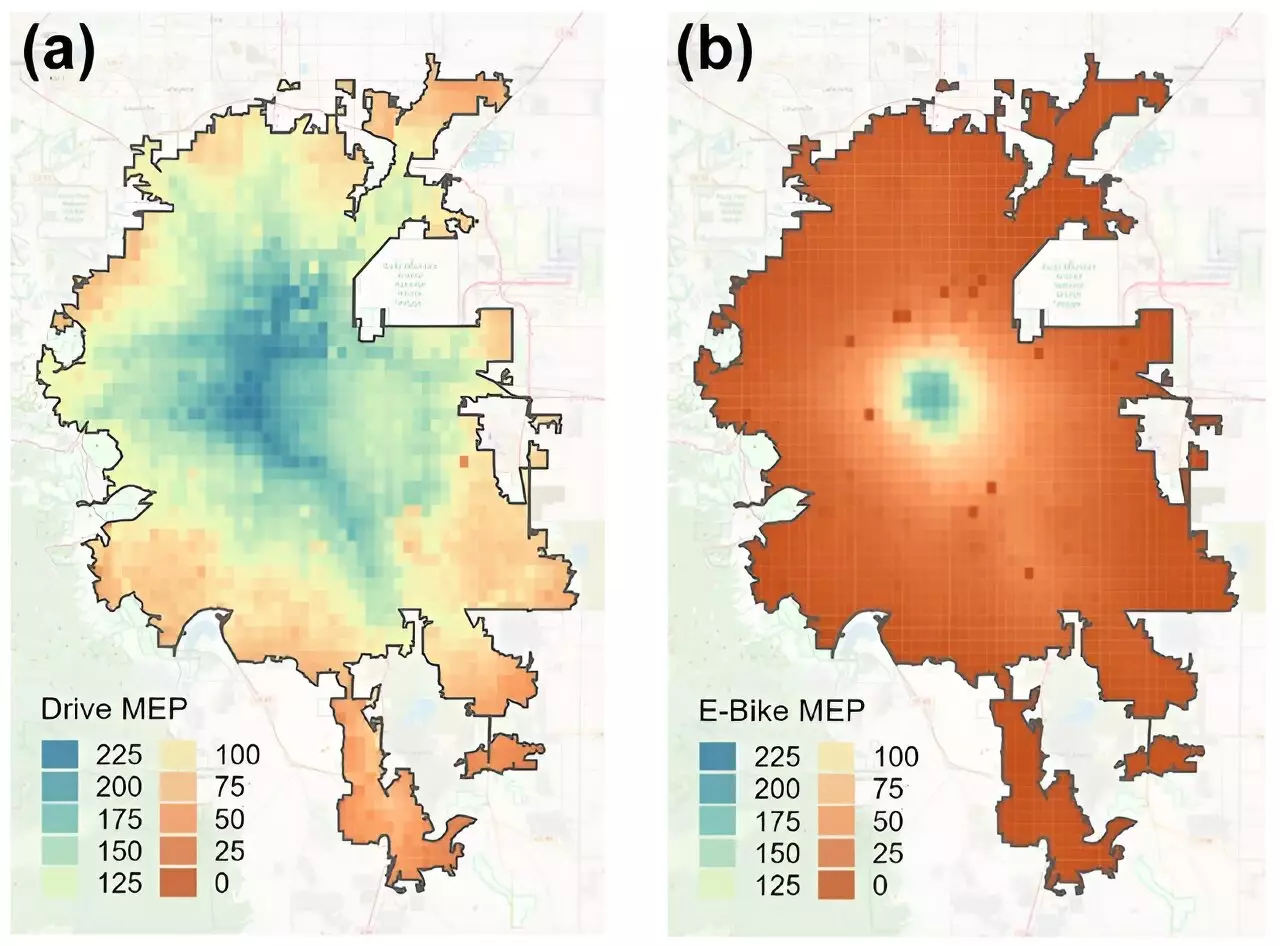Electric bikes, or e-bikes, have gained popularity as a sustainable and efficient mode of transportation. However, it is important to understand their overall impact on mobility, particularly for specific groups in a region. In order to gather real-world data and evaluate the effectiveness of e-bikes, researchers at the National Renewable Energy Laboratory (NREL) have developed two key tools: the Open Platform for Agile Trip Heuristics (OpenPATH) and the Mobility Energy Productivity (MEP) metric. By integrating these tools, transportation practitioners and planners can gain valuable insights into the implications of e-bikes for sustainable, equitable, and efficient mobility.
The NREL researchers tested the integration of OpenPATH and MEP by examining the impact of providing e-bikes to low-income essential workers in Colorado. Through analysis of nearly 50,000 trips, the researchers discovered that certain locations in downtown Denver offered time-, cost-, and energy-efficient access to opportunities using e-bikes compared to driving. However, it was also evident that driving remained the most frequent mode of travel for low-income essential workers, even though e-bikes were used most frequently for commuting to work.
The Mobility Energy Productivity (MEP) metric is a multidimensional tool that quantifies the efficiency of a region’s transportation system. It measures the ability of the transportation system, including different travel modes, to connect individuals to goods, services, employment opportunities, and other activities, while considering factors such as time, cost, and energy. By integrating MEP with local mobility data collected via OpenPATH, the researchers were able to obtain locally relevant analysis results. Additionally, the MEP metric can provide insights into the physical infrastructure needed to support alternative transportation modes, such as bike paths.
The researchers found that the overall e-bike MEP for Denver was 34, which was slightly over a quarter of the drive MEP (129), but more than twice as high as the bike MEP (16) for the same region. This suggests that e-bikes offer more time-, energy-, and cost-efficient access to opportunities compared to manual bikes. In downtown Denver, where opportunities are concentrated and bike paths are well-connected, the e-bike MEP was comparable in magnitude to the drive MEP. However, in areas with limited infrastructure connectivity, such as highways where bikes, e-bikes, and pedestrians are not permitted, the MEP scores for walk, bike, and e-bike were zero.
When comparing the e-bike-to-drive MEP ratio across Denver, the researchers identified 12 areas where the e-bike MEP was comparable in magnitude to the drive MEP. These areas provided 80% or more energy-efficient access relative to driving, making e-bikes a viable alternative in terms of efficiency. The location with the score most similar to the drive MEP was near the Colorado State Capitol, providing 94% of the drive MEP. This finding aligns with previous research highlighting the importance of density in urban mobility trends, where regions with higher densities tend to have a higher number of shorter-distance trips.
Urban planning that prioritizes cars has resulted in a significant amount of land being dedicated to driving and parking personal vehicles, leading to increased energy use and greenhouse gas emissions. E-bikes, on the other hand, are small and electrically powered, making them a more cost and energy-efficient mode of transportation. In combination with decarbonized electric grids, electrifying vehicles, including e-bikes, can play a crucial role in reducing transportation-related greenhouse gases. By embracing new mobility technologies, implementing supportive policies, and offering incentive programs, sustainability and equity issues in transportation planning can be effectively addressed.
The integration of OpenPATH and the MEP metric provides valuable insights into the impact of e-bikes on mobility. The analysis conducted by NREL researchers demonstrates that e-bikes can offer time-, cost-, and energy-efficient access to opportunities, particularly in densely populated areas. While there are limitations in terms of infrastructure connectivity for e-bikes, there is potential for e-bikes to be a viable alternative to driving, contributing to sustainable and equitable transportation systems. By leveraging the data and analysis provided by these tools, transportation practitioners and planners can make informed decisions to maximize the benefits of e-bikes and enhance overall mobility in their regions.


Leave a Reply